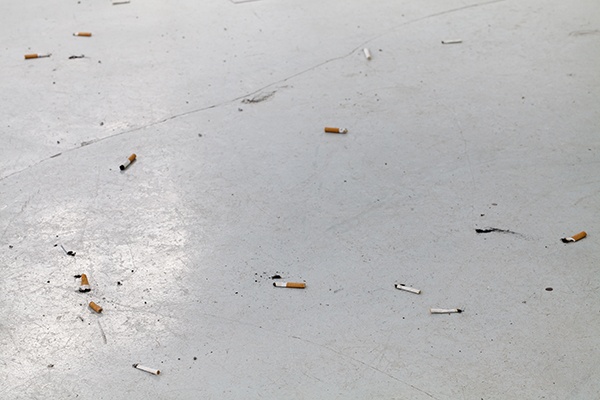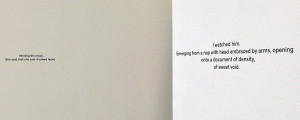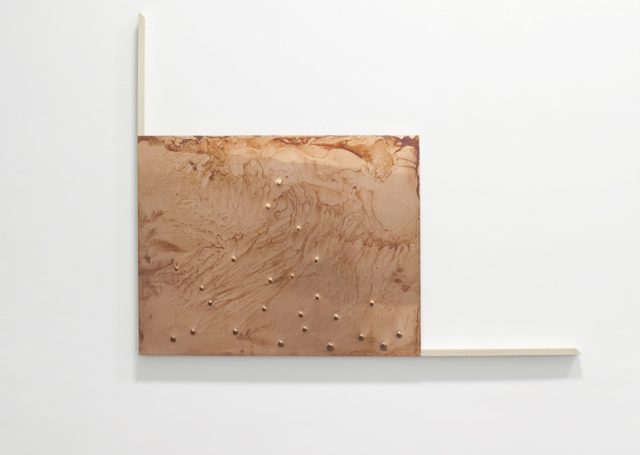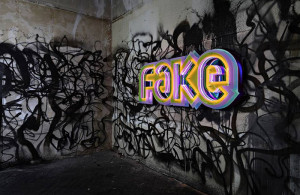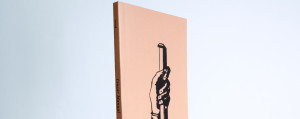“We need to talk about the stick again,” declares Johannes Thumfart in Linear Manual a collection of essays, images, sidebars, “slides and poetry” exploring themes of tools, power, fetish, surface and, of course, sticks. Featuring 13 contributors, “hosted” by Berlin-based artist Martin Kohout and published under his own bespoke TLTRPreß (TooLongToReadPress) publisher, as well as PAF, the book may have been published two years ago but its ideas are no less (if not more) relevant.
Intermittent thumbnails, photos, illustrations of people and animals holding and using twigs, batons, staffs, rods are strewn across the thin, pale-pink covered book –designed by PWR studio’s Rasmus Svensson. Arrows, pointers and cursors direct the eye, one toward the Linear Manual title of the spine, another to an opening quote from Alain Robbe-Grillet’s The Voyeur where its confused protagonist Mathias finds himself pondering an excuse away from his hosts:
“The complete lack of form which presided over the latter’s arrangement prevented the salesman once again from knowing what to do.”
Based on and built around the structure of a conference meeting, Kohout provides the form Mathias’ meal is lacking in the “Morning session”, “Lunch break”, “Afternoon session” and “Tea at five” segments splitting and interjecting the sequential, or ‘linear’, nature of his chosen book format. Paul Pieroni’s text-box antagonisms pop up with the odd haughty comment across “Better ignorant at 47 than self-aware at 30. So STICK AROUND” or “This one’s after some Jagermeister…” and Jo-ey Tang’s series of photocopied pages composed of text revealing “the age of the questioned document… completely dropped”. Tang’s words follow Paul Haworth’s poignant eulogy to a broken heart that unfolds across a bathroom and the subway; emotions in relation to space and infrastructure –“this is my life”.
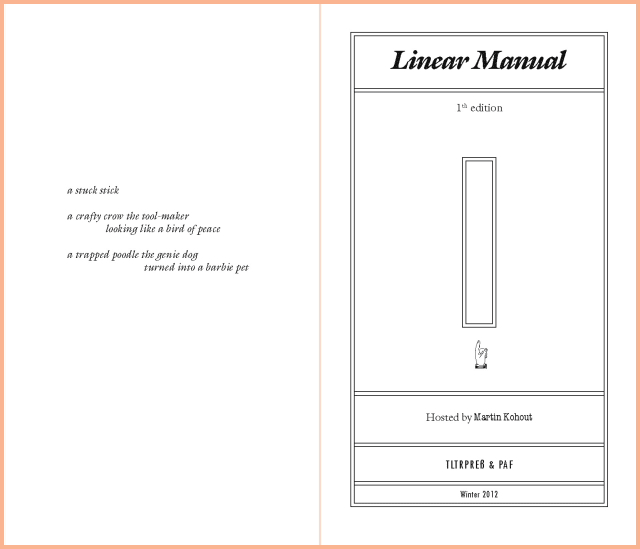
“Here too he found himself unable to act according to any rule he could interpret as applicable…”
That’s another echo of the aforementioned Robbe-Grillet quote, as one contemplates Brian Droitcour’s brilliantly deadpan ‘Robots in the Commune’. From the outset it calls out the “hordes of hipsters… fuelling the same corporate giant they’re trying to take down” during #OccupyWallStreet with their iPhones, accompanied by an image of onlookers taking happy snaps of riot police. A familiar Office Assistant icon of a paperclip personified (“You’re computer seems to be turned on”), accompanies the piece as it deconstructs the “totalitarian networks” of word processors and Google search engines and their role in developing and perpetuating ideology through ‘contextual discovery’: “robbie williams naked. Related searches: robbie williams fat”.
Juliette Bonneviot also recreates the monotonous and misleading nature of unreliable online constructions of reality through film stills for ‘La Mort De Lully’ (‘Wikidemia’). Here, the story of Baroque composer Jean-Baptiste de Lully, is told through the non-descript, grayscale CGI form of a male archetype, narrated by white bubble text: “Lully refused to have his toe amputated and the gangrene spread, resulting in his death on 22 March”. It not only illustrates the banality of the network’s malevolence but questions how we allow for things like this happen. Pieroni’s blunt answer comes in one of his forthright interjections: “Convenience FUCKO.”
Dieter Roestraete’s ‘Jena Revisited (Ten Tentative Tenets)’ links what he thinks is the problematic “rhetoric of emancipation through immersion” –where the “idea of the art world starts to eclipse the idea of art” –to the network as well. He uses Caspar David Friedrich’s famous ‘The Wanderer Above the Mists’ as an allegory for the “haze that fills today’s art world”, where, like in Droitcour’s ‘Robots in the Commune’, it exposes the “utopia of mobility”as becoming “a dystopia of absolute immobility”.
Perhaps that’s why the timeless format of the bound book is such an apt one for
Linear Manual; it’s segments offering a structure to the multimedia presentation that an actual interactive, multimedia format couldn’t. Yet, while the book form itself perpetuates the arbitrary idea of duration in the imposed structures of the working day,
Linear Manual also both mimics and negates the distracted habits of the online browser. Because, while the diversion from Thumfart’s ‘Why We Need to Talk about the Stick Again: A Post-Deconstructivist Meditation’ is encouraged away from the “Animals use Sticks too!” subheading by a ubiquitous arrow pointing toward a 2011 wikipedia entry on the New Caledonian Crow, the extent and breadth of this distraction is still restricted to content curated by Kohout. You may have the option of disregarding it, but it’s still the only content there to disregard.
Meanwhile, the smoothed-edged box of Pieroni’s aphorisms continue to appear as listless distraction alongside and away from Linear Manual’s central pieces. Kohout’s dazzling ‘Sticks: Class A’ series, photographed in collaboration with Rachel de Joode, fashioned and fetishised by bold colour blocks, sport grips and wrist bands against a blue-clouded backdrop are met with Pieroni’s, “I like the look of awkward vegetables on the glass”. There’s fetishisation throughout Linear Manual; of textures, the nine-to-five workday, a chrome draw handle suspended in white space. The complexity and stark beauty of a corporate-like glass railing is set and displayed on its own with a “Four Seasons glass railing available at www.glass-railing.net”, an actual showcase of glass railings for sale online.

Published in 2012 Linear Manual holds up in its interrogation of contemporary technologies, despite a widely held assumption that their progress is advancing at such a rate that softwares can become obsolete within a matter of months, but there are things that don’t change. We’re all still Thumfart’s “animals in human costume”. The lack of distinction is not only illustrated by the New Caledonian Crow’s ability to also use tools like we do but our own persistent exploitation of these tools for “allowing men to treat their fellow men like animals” –whether by stick or by internet. Sadly, there’s been no tool invented for circumventing human nature, as Mathias’ narrator declares within The Voyeur’s confusing and ambiguous time frame: “the meal had no more reason to be over than it had to continue”.**
share news item
